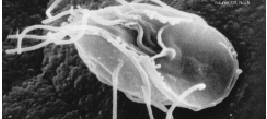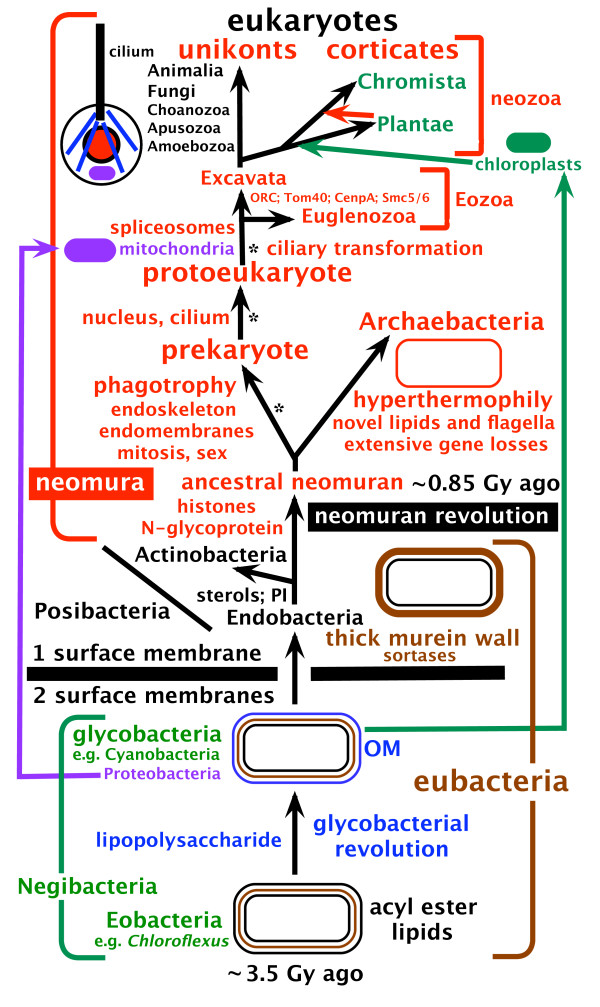|
Trichosphaerium Platyxyrum
''Trichosphaerium'' is a genus of amoebozoan protists that present extraordinary morphological transformations, both in size and shape, during their life cycle. They can present a test that may or may not be covered in spicules. They are related to the family Microcoryciidae, which contains other amoebae with tests, within the clade Corycidia of the phylum Amoebozoa. Morphology ''Trichosphaerium'' is a genus of amoebae characterized from other Amoebozoa by a multiporous test and a specialized non-motile pseudopodium, known as a dactylopodium, shaped like a digit. The dactylopodium is considered a sensory structure. Its morphology, behavior and life cycle are extraordinary in comparison with other protists. During its poorly understood life cycle, ''Trichosphaerium'' undergoes dramatic changes in shape and size. They can grow from as small as 10 μm to giant cell sizes of over 1 mm, observable by the naked eye. They can display such varied recognizable morphotypes that they c ... [...More Info...] [...Related Items...] OR: [Wikipedia] [Google] [Baidu] |
Amoebozoan
Amoebozoa is a major taxonomic group containing about 2,400 described species of amoeboid protists, often possessing blunt, fingerlike, lobose pseudopods and tubular mitochondrial cristae. In traditional classification schemes, Amoebozoa is usually ranked as a phylum within either the kingdom Protista or the kingdom Protozoa. In the classification favored by the International Society of Protistologists, it is retained as an unranked " supergroup" within Eukaryota. Molecular genetic analysis supports Amoebozoa as a monophyletic clade. Modern studies of eukaryotic phylogenetic trees identify it as the sister group to Opisthokonta, another major clade which contains both fungi and animals as well as several other clades comprising some 300 species of unicellular eukaryotes. Amoebozoa and Opisthokonta are sometimes grouped together in a high-level taxon, named Amorphea. Amoebozoa includes many of the best-known amoeboid organisms, such as ''Chaos'', '' Entamoeba'', ''Pelomyxa'' an ... [...More Info...] [...Related Items...] OR: [Wikipedia] [Google] [Baidu] |
Flagellate
A flagellate is a cell or organism with one or more whip-like appendages called flagella. The word ''flagellate'' also describes a particular construction (or level of organization) characteristic of many prokaryotes and eukaryotes and their means of motion. The term presently does not imply any specific relationship or classification of the organisms that possess flagella. However, several derivations of the term "flagellate" (such as " dinoflagellate" and " choanoflagellate") are more formally characterized. Form and behavior Flagella in eukaryotes are supported by microtubules in a characteristic arrangement, with nine fused pairs surrounding two central singlets. These arise from a basal body. In some flagellates, flagella direct food into a cytostome or mouth, where food is ingested. Flagella role in classifying eukaryotes. Among protoctists and microscopic animals, a flagellate is an organism with one or more flagella. Some cells in other animals may be flage ... [...More Info...] [...Related Items...] OR: [Wikipedia] [Google] [Baidu] |
Trichosphaerium Micrum
''Trichosphaerium'' is a genus of amoebozoan protists that present extraordinary morphological transformations, both in size and shape, during their life cycle. They can present a test that may or may not be covered in spicules. They are related to the family Microcoryciidae, which contains other amoebae with tests, within the clade Corycidia of the phylum Amoebozoa. Morphology ''Trichosphaerium'' is a genus of amoebae characterized from other Amoebozoa by a multiporous test and a specialized non-motile pseudopodium, known as a dactylopodium, shaped like a digit. The dactylopodium is considered a sensory structure. Its morphology, behavior and life cycle are extraordinary in comparison with other protists. During its poorly understood life cycle, ''Trichosphaerium'' undergoes dramatic changes in shape and size. They can grow from as small as 10 μm to giant cell sizes of over 1 mm, observable by the naked eye. They can display such varied recognizable morphotypes that they c ... [...More Info...] [...Related Items...] OR: [Wikipedia] [Google] [Baidu] |
DNA Sequencing
DNA sequencing is the process of determining the nucleic acid sequence – the order of nucleotides in DNA. It includes any method or technology that is used to determine the order of the four bases: adenine, thymine, cytosine, and guanine. The advent of rapid DNA sequencing methods has greatly accelerated biological and medical research and discovery. Knowledge of DNA sequences has become indispensable for basic biological research, Genographic Project, DNA Genographic Projects and in numerous applied fields such as medical diagnosis, biotechnology, forensic biology, virology and biological systematics. Comparing healthy and mutated DNA sequences can diagnose different diseases including various cancers, characterize antibody repertoire, and can be used to guide patient treatment. Having a quick way to sequence DNA allows for faster and more individualized medical care to be administered, and for more organisms to be identified and cataloged. The rapid advancements in DNA seque ... [...More Info...] [...Related Items...] OR: [Wikipedia] [Google] [Baidu] |
Test (biology)
In biology, a test is the hard Seashell, shell of some spherical aquatic animals and protists, notably sea urchins and microorganisms such as testate foraminiferans, radiolarians, and testate amoebae. The term is also applied to the covering of scale insects. The related Latin term testa (botany), testa is used for the outer layer of the hard seed coat of plant seeds. Etymology The anatomical term "test" derives from the Latin word ''wikt:testa#Latin, testa'', which refers to an earthenware object, for example, a piece of pottery, a tile, or a potshard, and by extension, the mollusc shell, shell of a mollusc or a skull. Structure The test is a skeletal structure, made of hard material such as calcium carbonate, silica, chitin or composite materials. As such, it allows the protection of the internal organs and the attachment of soft flesh. The structure is notable for its Ambulacral, ambulacra, alternating in wide and narrow patterns. Small serrations, bumps, ridges or th ... [...More Info...] [...Related Items...] OR: [Wikipedia] [Google] [Baidu] |
Taxonomy Of Protista
A protist () is any Eukaryote, eukaryotic organism (one with cells containing a nucleus) that is not an animal, Embryophyte, plant, or fungus. The protists do not form a natural group, or clade, since they exclude certain eukaryotes with whom they share a common ancestor; but, like algae or invertebrates, the grouping is used for convenience. In some systems of Taxonomy (biology), biological classification, such as the popular Kingdom (biology)#History, five-kingdom scheme proposed by Robert Whittaker (ecologist), Robert Whittaker in 1969, the protists make up a Kingdom (biology), kingdom called Protista, composed of "organisms which are unicellular or unicellular-colonial and which form no Tissue (biology), tissues". In the 21st century, the classification shifted toward a two-kingdom system of protists: Chromista (containing the Chromalveolata, chromalveolate, rhizarian and hacrobian groups) and Protozoa (containing excavata, excavates and all protists more closely related to ani ... [...More Info...] [...Related Items...] OR: [Wikipedia] [Google] [Baidu] |
Thomas Cavalier-Smith
Thomas (Tom) Cavalier-Smith, FRS, FRSC, NERC Professorial Fellow (21 October 1942 – 19 March 2021), was a professor of evolutionary biology in the Department of Zoology, at the University of Oxford. His research has led to discovery of a number of unicellular organisms (protists) and advocated for a variety of major taxonomic groups, such as the Chromista, Chromalveolata, Opisthokonta, Rhizaria, and Excavata. He was known for his systems of classification of all organisms. Life and career Cavalier-Smith was born on 21 October 1942 in London. His parents were Mary Maude (née Bratt) and Alan Hailes Spencer Cavalier Smith. He was educated at Norwich School, Gonville and Caius College, Cambridge (MA) in Biology and King's College London (PhD) in Zoology. He was under the supervision of Sir John Randall for his PhD thesis between 1964 and 1967; his thesis was entitled "''Organelle Development in'' Chlamydomonas reinhardii". From 1967 to 1969, Cavalier-S ... [...More Info...] [...Related Items...] OR: [Wikipedia] [Google] [Baidu] |
American (continent)
The Americas, sometimes collectively called America, are a landmass comprising the totality of North America and South America.''Webster's New World College Dictionary'', 2010 by Wiley Publishing, Inc., Cleveland, Ohio. When viewed as a single continent, the Americas or America is the 2nd largest continent by area after Asia, and is the 3rd largest continent by population. The Americas make up most of the land in Earth's Western Hemisphere and comprise the New World. Along with their associated islands, the Americas cover 8% of Earth's total surface area and 28.4% of its land area. The topography is dominated by the American Cordillera, a long chain of mountains that runs the length of the west coast. The flatter eastern side of the Americas is dominated by large river basins, such as the Amazon, St. Lawrence River–Great Lakes, Mississippi, and La Plata basins. Since the Americas extend from north to south, the climate and ecology vary widely, from the arctic tundra of No ... [...More Info...] [...Related Items...] OR: [Wikipedia] [Google] [Baidu] |
Clade
In biology, a clade (), also known as a Monophyly, monophyletic group or natural group, is a group of organisms that is composed of a common ancestor and all of its descendants. Clades are the fundamental unit of cladistics, a modern approach to taxonomy adopted by most biological fields. The common ancestor may be an individual, a population, or a species (extinct or Extant taxon, extant). Clades are nested, one in another, as each branch in turn splits into smaller branches. These splits reflect evolutionary history as populations diverged and evolved independently. Clades are termed ''monophyletic'' (Greek: "one clan") groups. Over the last few decades, the cladistic approach has revolutionized biological classification and revealed surprising evolutionary relationships among organisms. Increasingly, taxonomists try to avoid naming Taxon, taxa that are not clades; that is, taxa that are not Monophyly, monophyletic. Some of the relationships between organisms that the molecul ... [...More Info...] [...Related Items...] OR: [Wikipedia] [Google] [Baidu] |
Phylogenomic
Phylogenomics is the intersection of the fields of evolution and genomics. The term has been used in multiple ways to refer to analysis that involves genome data and evolutionary reconstructions. It is a group of techniques within the larger fields of phylogenetics and genomics. Phylogenomics draws information by comparing entire genomes, or at least large portions of genomes. Phylogenetics compares and analyzes the sequences of single genes, or a small number of genes, as well as many other types of data. Four major areas fall under phylogenomics: * Prediction of gene function * Establishment and clarification of evolutionary relationships * Gene family evolution * Prediction and retracing lateral gene transfer. The ultimate goal of phylogenomics is to reconstruct the evolutionary history of species through their genomes. This history is usually inferred from a series of genomes by using a genome evolution model and standard statistical inference methods (e.g. Bayesian inference or ... [...More Info...] [...Related Items...] OR: [Wikipedia] [Google] [Baidu] |
Tubulinea
The Tubulinea are a major grouping of Amoebozoa, including most of the more familiar amoebae genera like ''Amoeba'', '' Arcella'', '' Difflugia'' and '' Hartmannella''. Characteristics During locomotion most Tubulinea have a roughly cylindrical form or produce numerous cylindrical pseudopods. Each cylinder advances by a single central stream of cytoplasm, granular in appearance, and has no subpseudopodia. This distinguishes them from other amoeboid groups, although in some members this is not the normal type of locomotion. Classification This class was anticipated by some biologists such as Jahn, who grouped all amoebae with granular pseudopodia together, but most split the lobose amoebae into testate Testacealobosia and naked Gymnamoebia. These latter are polyphyletic, but molecular trees by Bolivar ''et al.'' identified a core monophyletic subgroup. Subsequent studies showed the testate lobose amoebae belong to the same group, which was thus renamed Lobosea ''sensu stric ... [...More Info...] [...Related Items...] OR: [Wikipedia] [Google] [Baidu] |







